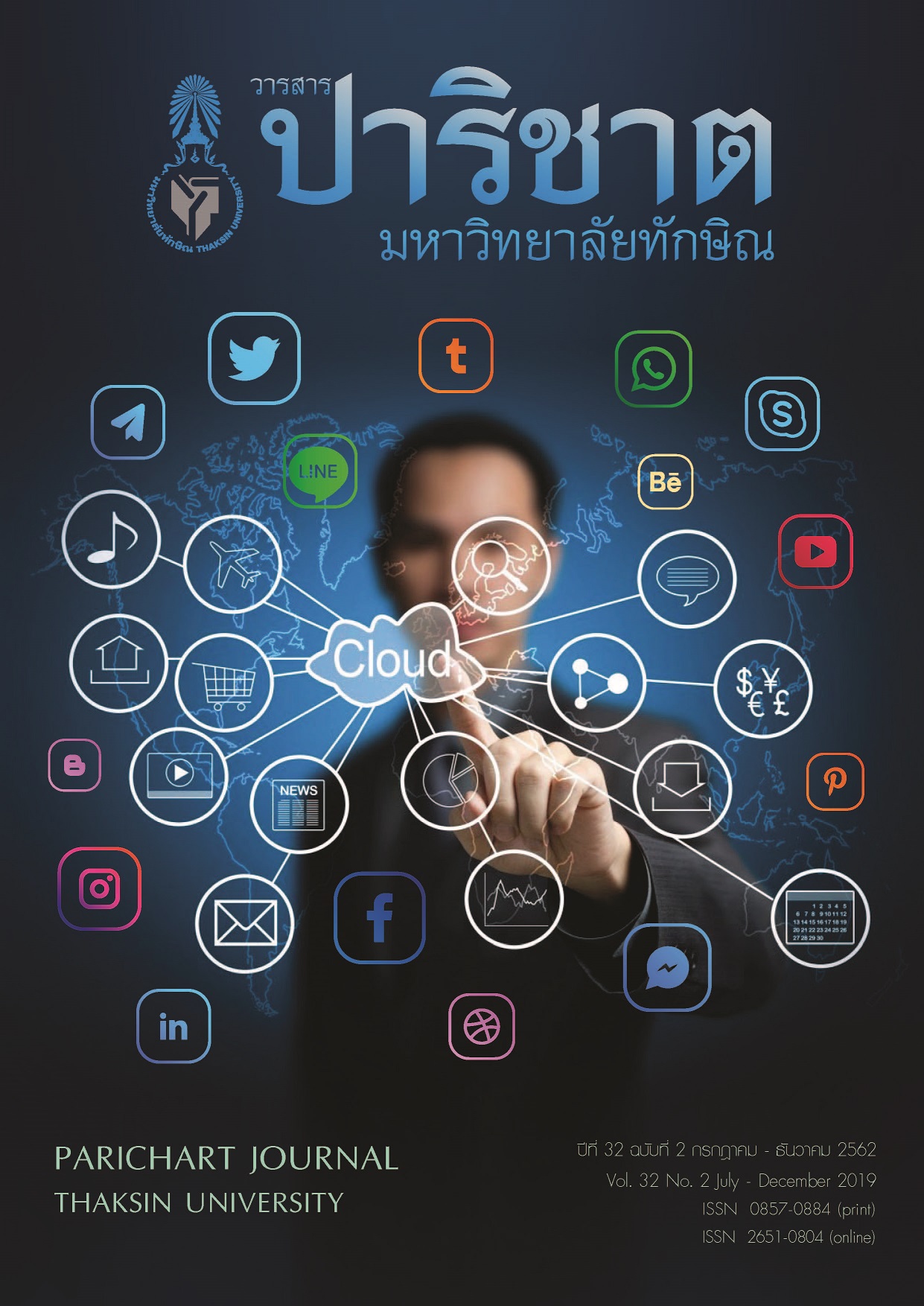Toponyme of Naming Temples Bang Kruai District In Nonthaburi Province Toponyme of Naming Temple
Main Article Content
Abstract
The objectives of this research were to study and analyze the relating landscape of 46 temples based on history, language structure, meanings and belief of the temples’ names which have an impact on the residents’ life style in Bang Kruay District. This qualitative research used a survey method and the in-depth interview with the subjects aged 55 years old and above. The results of the study showed that the history of 46 temples at Bang Kruai District related to ancestors’ ethnic group who migrated from Ayuddhaya. According to the language structure analysis, the toponymes of 35 temples consisted of 1–2 basic words (76.08%). The meanings of 25 temples’ names were related to trees, forest, landscape, and places (54.35%). There were two aspects of the belief of temples’ names relating to the residents’ life style in Bang Kruay District: 1) belief related to trees, forest, someone’s good deeds, and admiration of big animals that the residents feel they owe them, and 2) belief about superstitions, super natural phenomena, spelling and taking vows.
Article Details
References
[2] Piyakorn, P. (2014). Rural geography (Third Edition). Bangkok: Ramkhamhaeng University.
[3] Deepadung, S. (January–June 2000). Village name in Nakhon Pathom. Journal of Language and Culture. 19(1), 55–57.
[4] Eoseewong, N. (2002). Before the age of universal well-being-religion, belief, and morality. Bangkok: Matichon.
[5] Phra Thēpwēthī (PQ̅. ‘Q̅. Payuttō). (2004). Buddhist institute and thai society. Bangkok: Komolkeemthong Foundation.
[6] Khunpol, S. (2015). A study of cultural identity in beliefs of Kohyor Community. Parichart Journal. Thaksin University, 28(3), 82-103.
[7] Ministry of Education, Department of Curriculum and Instruction Development. (1985). Thai language teaching manual. Bangkok: Kurusapa Printing Ladphrao.
[8] Ramitanont, C. (1984). Thai society and beliefs. Bangkok: Payap offset printing.
[9] Municipality, B. (2004). Development plan of Bangkruai Municipality B.E.2559-2562. Division of Technical and Planning, Copied document.
[10] Kullavanijaya, P. (1992). Villages name in Guangxi and Northeastern of Thailand. Bangkok: Chulalongkorn University Printing House.
[11] Veerasilchai, S. (2008). A house in the city of Bangkok. Bangkok: Matichon Publishing House.
[12] Juchooy, S. (2011). The way of life of people living in Bangkhanoon Community under the local cultural change. Research Report, Rajapruk University.
[13] Teerapatthamrong, S. (2014). A comparative study of roles and activities of temples and monks on status promotion of children’s temple in Thai society. A Thesis for Master of Arts Program in Religion, Mahidol University.


